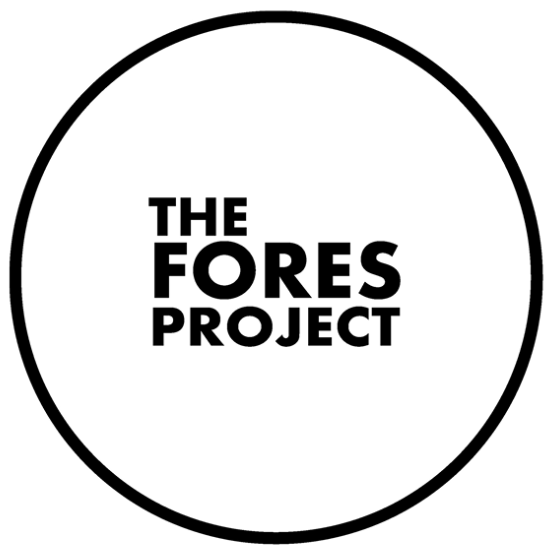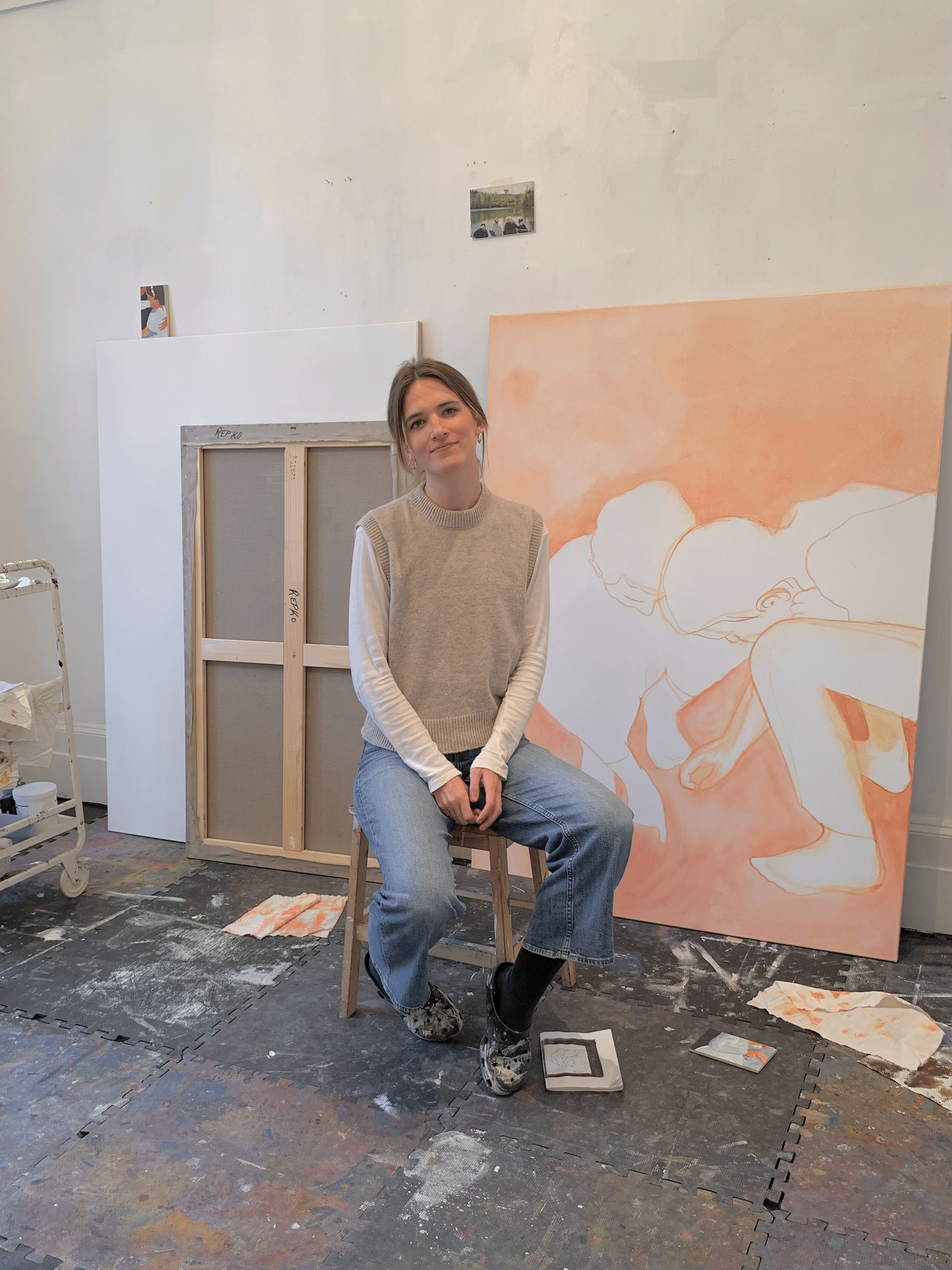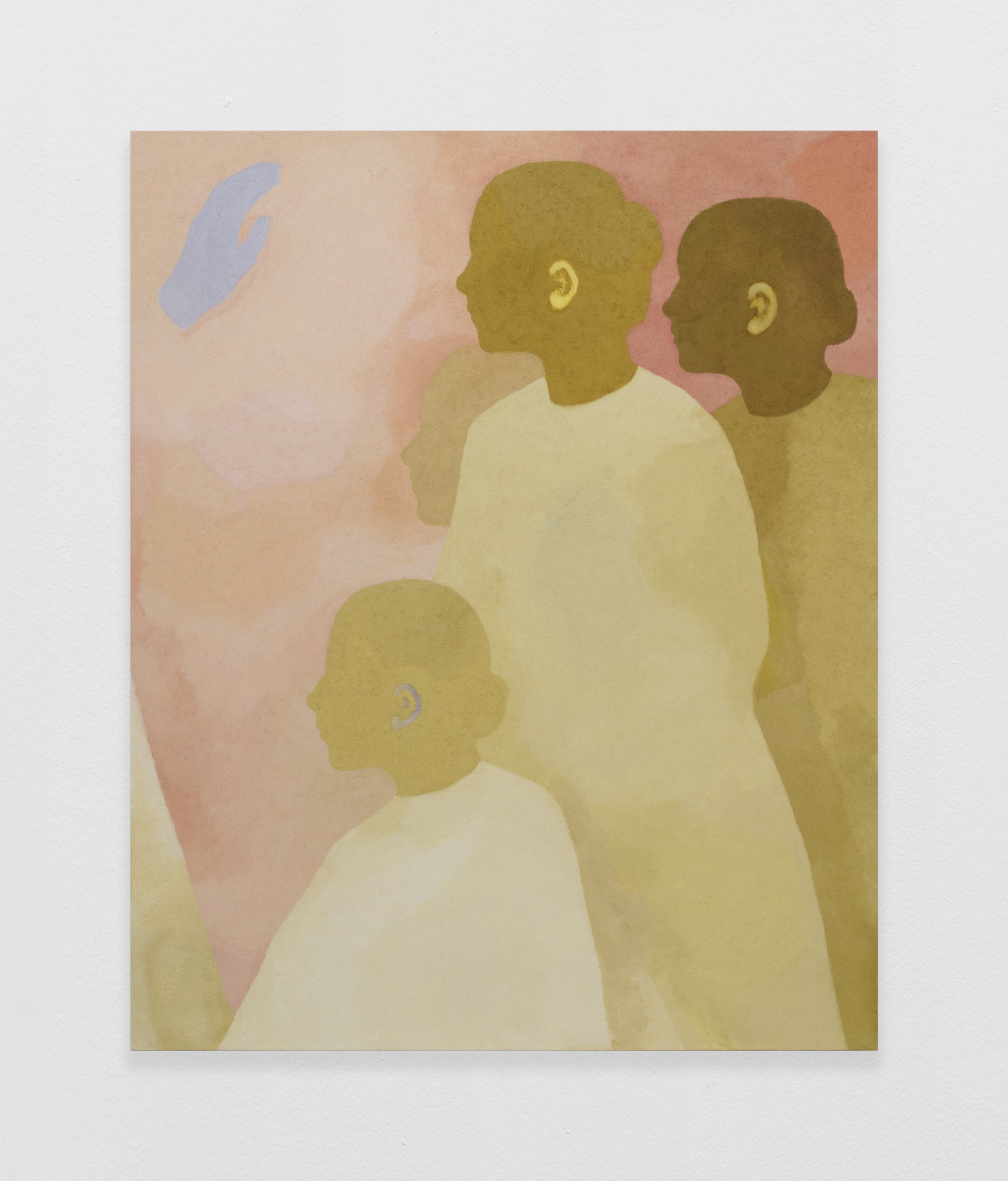CATHERINE REPKO
Repko’s paintings speak to the unbreakable but ever-changing bond between sisters. Tied not just by blood, but a lineage of history, myth and community, sisterhood itself is an immovable, yet malleable, body that shifts its form with the changes of womanhood.
Repko’s figures meld into one another and their surroundings. Muted hues of white, pink, blue and yellow oil paint are textured by marble dust, turning painted figure to stone. Despite their stony form, they thrum with an underlying energy, as negative space is activated by colour and texture. The scale of these figures is indeterminable. In some cases, they seem unfathomably large, turning the slope of an arm to a valley or mountainside. In contrast, their gestures are gentle and intimate, the casual brushing of hands an inherently human gesture that brings the works to a more lifelike scale. The figures are exchanged between deity and girl, past and present, solid and fluid, one sister and the next.
In various mythologies sisters are a constant that tie together the fabric of existence; Moriai, Parcae, Rozhanitsy – The Fates, which hold the string of life. Repko’s painting Mother’s Pearls, 2024 calls this to mind as two figures pass a string of pearls back and forth. At once careless; casual touch, practised and with familiar ease, and careful; in the care given to something delicate passed between them.
The figures are unified but still hold their own space within the paintings. Even as bodies merge and we begin to question where one ends, and the next begins, there are exacting moments of separation. This occurs in life when a sister becomes, a wife, a mother, or a friend. The expectations of womanhood unite sisters, but when one shifts from girl to woman, the gap between them suddenly opens - chasmic. When it’s time for the others to take the leap too, the distance suddenly recedes.
The absent sounds of sisterhood – the cacophony of how girls talk, overlapping broken sentences and interruptions – emphasise the unspoken communication present in shared touches and pressed shoulders. The sparse realm of the paintings makes the simplest gesture feel poignant, as Repko’s figures share these moments of connection and disconnection.










